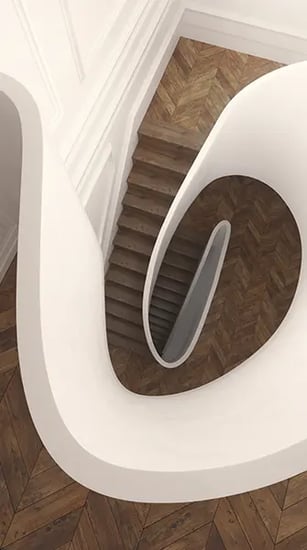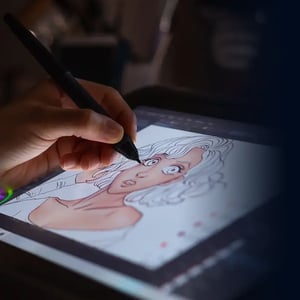
3D Visualization Essentials
Online beginner 3D visualization course created by a certified V-Ray instructor
Master the Basics of 3D Visualization and Bring Your Ideas to Life
The 3D Visualization Essentials course is ideal for artists, architects, product designers, and fashion designers seeking to build a strong foundation in 3D techniques used across creative industries. Whether you're interested in architecture, product design, or entertainment, this course provides the skills to bring your 3D concepts to life.
What You'll Learn:
- 3D Modeling & Texturing: Master the fundamentals of creating and texturing 3D objects.
- Lighting & Rendering: Learn to set up lighting and render high-quality visuals.
- Camera & Composition: Discover techniques to frame scenes for maximum impact.
- Visualization Techniques: Explore methods tailored to architecture, product design, and more.
Gain hands-on experience with real-world projects and expert feedback. This course is perfect for beginners ready to start their journey in 3D visualization and succeed across creative fields.

Master Your Skills. Master Your Future.
Our mission is to ensure graduates are the best trained and best prepared for a successful career in their chosen field.
Everything You Need To Know
 Qualification
Industry certificate
Qualification
Industry certificate
 Study Load
Study Load
20hrs/week
 Program Length
Program Length
3 months
 Delivery Mode
Online live classes
Delivery Mode
Online live classesCustom video lectures
Personalised mentor feedback
 Skill Level
Skill Level
Beginner
No entry requirements
 Start Dates
Start Dates

Your pathway to the industry
This short course forms term one of the Foundations course, so on completion, you'll be a quarter of the way through! Continue you're learning journey towards an exciting career in the industry by enrolling into the Foundations Career Track.

Foundations 1: Essentials of 3D Visualization
In this introductory course, you'll learn the fundamentals of industry software 3ds Max and V-Ray, building 3D modeling and 3D rendering skills. You'll get to model, texture, and light digital kitchen items, blocking them out in a 3D virtual scene using physical cameras, and adjusting focal lengths to achieve better results.
- How to use essential 3ds Max and V-Ray features
- Basic modeling and texturing skills
- Scene planning and composition
- Overview of 3D visualization production pipelines
- Introduction to 3D Visualization
- Introduction to 3D Modeling
- Lighting and Rendering Fundamentals
- Material and Shader Basics
- Understanding Procedural Textures
- Texture Projection Methods
- Decals, Enmesh and IPR Rendering
- Splines For Architectural Visualization
- Hard Surface Modeling
- Blockout and Planning
- Introduction to Production Workflows
- Production Workflows Continued
Download the Course Guide
Your creative journey begins here! Download our comprehensive course guide and discover the exciting educational opportunities that await you.Group Class
$1,222 USD/mo4 students max class size
Students are assigned mentor
Group interaction & collaboration
Private 1:1
$1,711 USD/moPrivate dedicated mentor
Students choose their mentor
More dedicated time per week
Don't Put Your Future On Hold
Financing shouldn't stand in the way of pursuing your dream career. No matter where you are in your creative learning journey, our financing options have been designed with you in mind.Learn Directly From Film & Game Mentors
To be the best, it helps to learn from the best. All 3D visualization classes are taught by professional designers with years of experience.


Nicklas Byriel
A certified V-Ray instructor, Nicklas is a 3D generalist/TD with over a decade of experience in 3D visualization, including running his own company Negative Black.
Known for Founder of Chaos Theory


Teodor Vladov
After earning his Masters in Architecture from the State Academy of Fine Arts in Stuttgart, Teodor established Helldoor Visual Studio and has been working in 3D visualization for over a decade.
Known for Architectural Visualization


Ioanna Ivanova
Ioanna graduated with a degree in Computer Visualisation & Animation from Bournemouth University. She began her career at INK, a creative studio based in London, where she worked with clients ...
Known for Product Visualization


Wessel Huizenga
Combining his interests in architectural visualization and game development, Wessel works as a real-time architectural visualization artist to create courses with Epic games for their ArtStation ...
Known for Architectural Visualization


Anastasia Edwards-Morel
Anastasia holds a masters degree in Fashion Design from FIT, where she focused on 3D. She has led design at various startups, and currently serves as Head of Design at ICONIQ AI.
Known for Digital Fashion
Get The Education You Deserve

"My mentorship at CG Spectrum had a profound impact on my career path.
What really made a difference for me was the structured environment and the direct access to experienced mentors at CG Spectrum. It provided the clarity and guidance I needed at that time."

Gizem G | 3D Visualization
Join Our Alumni at World Class Studios
Our mission is to train highly skilled graduates ensuring they are prepared for a successful career. Take the first step towards joining our alumni at world-class studios creating work that inspires.












Questions? We Have Answers
Age Minimum
The general minimum age to be able to enroll in our industry certificate courses is 16. We require parent or guardian consent during the enrollment process for applicants under 18.
Students under 16 will require a further assessment before they can officially enrol. This may include an interview with a course advisor and the creation of a study plan to ensure they have considered how they will manage a college-level workload.
English Proficiency
We expect our students to have a good understanding of written and spoken English. There’s no specific ’level'; however, you must be able to understand video tutorials in English (no subtitles) and speak with your mentor in English during your live Q&A session.
Computer Literacy
To be successful in this program, you will need basic computer skills and a computer that meets the minimum specifications (see next question).
Software:
You will need educational licences of 3ds Max and V-Ray to participate in this course.
Instructions on how to obtain an educational license for these programs will be supplied upon enrollment for the course.
Hardware:
Students will need a dedicated graphics card and a computer that meets the minimum requirements for Autodesk 3ds Max and Chaos V-Ray.
The software and skills you will be learning in this course do not require a background in architecture.
What we teach you can definitely be applied to architecture, if you desire, and can help you work towards a career in architectural visualization (archviz), if that is your goal.
If you choose the 1-on-1 private mentorship option, then yes, you can decide to skip and adjust the pacing with your mentor.
This short course will get you started on your journey as a 3D visualization artist, but in a competitive industry, continuing your studies with the more comprehensive Foundations of 3D Visualization Course will better prepare you for a job and help increase your employment opportunities.
This course covers more complex techniques and includes an entire term dedicated to career development and portfolio preparation to get you industry-ready.
Some of the areas within 3d visualization you could explore after completing the full study pathway include:
- Architectural visualization
- Product visualization
- 3D visualization
- Digital fashion
- Film and games
Looking For Something Else?
Check out our full range of courses with study options for all skill levels, from short introductory courses, specialized industry tracks and accredited degrees and diplomas



